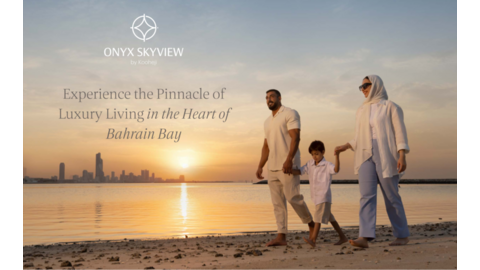Six reasons why France is so popular with tourists

For obvious reasons, tourism as been at a very low ebb for the past 18 months, but as holidaymakers gradually return, France is looking to hang on to its title of the world’s most visited destination, which it held for the five years before the pandemic.
But what makes France such an attractive destination for holiday-makers year after year? And will the pandemic usher in long-term changes?
1. The City of Light
It almost goes without saying, but the French capital is a huge draw for foreign visitors – over 30 million of them a year in fact (in a normal year) more than any other city in the world.
What makes it so popular? Where to start. There’s the city’s romantic image, the stunning architecture, the Louvre museum, the iconic Eiffel Tower as well as the simple pleasure of sitting at a café terrace and watching the world go by. European and US visitors have flocked here from all the world for many years, and they keep coming back and in recent years the appeal of Paris has gripped the far east, with more and more Chinese nationals coming to get a glimpse of the Champs Elysées and its array of boutiques.
And don’t forget Disneyland, which is a destination in itself for foreign visitors. With around 15 million visitors each year, the theme park, just to the east of the French capital is Europe’s top tourist destination.
So far, the tourists who have returned to France have tended to steer clear of crowded cities – which makes this a perfect summer for Parisians to explore landmarks in their own city which are normally too crowded with tourists.
2. A variety of sun, sea and mountains
As well the international visitors, France is a nation of staycationers – in fact only 30 percent of total tourist revenue in France comes from foreigners – the rest is from French people holidaying in their own country.
Why? Well, as they’ll be keen to tell you, it’s because France has everything, from sandy beaches, to snow-covered mountains and vast expanses of countryside.
Simon Dawson, from UK tour operator French Cycling Holidays, agrees. “Different regions have completely different appearances,” he says. “There’s the rolling countryside, great cities like Paris, Lyon, Marseille.”
Basically France offers something for everyone. While the Germans may come for the beaches, the Brits love the countryside and the Americans come for the chateaux and the culture.
The weather is a big factor too.
“France tends to have really good weather in the summer, it’s hot, but not baking hot like in Spain or Italy for example,” says Dawson.
France also benefits from being multi-seasonal – offering ski breaks in the winter and sun-soaked beach holidays in summer.
3. Strategic location
Part of France’s appeal, however, could just be a sheer coincidence of geography.
For example, for UK holidaymakers looking to escape their homeland’s unreliable summers, France is just a short hop across the Channel, a journey some 12.6 million made in 2013.
Travellers from another of France’s neighbours, Germany, made up 13 million visitors per year to France before the pandemic, more than any other country. However, not all these visitors are coming to see France itself.
“Because of France’s position many tourists are forced to pass through the country on their way to other destinations,” explains Didier Arino, president of tourism industry specialists Protourisme.
“Between 15 and 20 million of the visitors who come to France are just passing through on their way to Italy or Spain.”
This trend has been reinforced this year with many people preferring to avoid being jammed in with coughing strangers on flights and instead taking their car on holiday – probably heading either to or through France.
4. Escape to the countryside
Around 80 percent of France is countryside – and most of it stunning and tranquil. Besides Paris, this is the part of France most tourists want to see, says Dawson. “The most popular areas for our customers are the Loire Valley and Provence, the famous beautiful regions of France,” he says.
The countryside is particularly popular with those from the UK, who have a romantacised vision of rural life in France, according to Protourisme’s Arino.
“The British are in love with rural France. They idealise the countryside,” he says.
The Brits enjoy the contrast of the peaceful “France profonde” compared to the hussle and bussle of the towns and cities many of them live in.
5. Food and wine
France is, of course, inseparable from its famed gastronomical traditions and the chance to dine on French specialities – even snails – is no doubt a major part of what attracts visitors to the country.
France knows this and is keen to protect its status as the world’s food capital, as evidenced by its “homemade” food label scheme designed to discourage chefs from using frozen or ready-prepared ingredients and its numerous products with protected AOP geographical protection labels.
No proper French meal is complete without a few verres du vin and the country’s vast array of home-produced wines is another draw for tourists. On average, around 24 million foreign tourists visit Bordeaux, Burgundy and France’s other wine regions.
6. Art, history and culture
France is extremely proud of its long and often tumultuous history, from the French revolution to Napoleon and the two world wars, and historical sites are often on the itinerary for visitors. There’s the famous battle sites of the Somme and the D-Day landings, as well as the stunning chateaux, churches and cathedrals that decorate the landscape.
In fact, France has more than 40 sites on Unesco’s World Heritage list, putting it fourth in the global rankings. Museums and art galleries are also a major pull for tourists. The Louvre alone, home to the Mona Lisa among around 35,000 other artifacts and artworks, normally attracts 9.7 million visitors a year, more than any other museum in the world.
The Lonely Planet’s destination editor Kate Morgan sums it all up like this: “As a destination for travellers, France virtually has it all. France entices people of all ages with some of the world’s most iconic landmarks, world-class art and architecture, sensational food, stunning beaches, glitzy ski resorts, beautiful countryside and a staggering amount of history.”
Will the pandemic change this?
France is certainly keen to recapture its tourist market and back in May the country’s tourism ministry launched a plan to support embattled tourism businesses and lure visitors back.
It’s probably too early to tell whether the pandemic will bring in any lasting changes to tourism, but it may reinforce a couple of trends that were already emerging.
The desire for greener travel and flygskam (flight shame) has seen people cut back on long haul destinations and choose trips closer to home. This could benefit France with more Europeans choosing to travel there instead of jetting off to the Caribbean or Canaries, and France’s excellent high-speed train network (and emerging night train links) are a nice alternative for people who prefer not to fly.
The other side of this coin, however, is tourist operators turning away from mass tourism and focussing instead on smaller numbers of high-spending visitors – often from the Middle or Far East. This trend was already quite pronounced among the luxury establishments in Paris, which have for many years focussed on long-haul travellers.
Meanwhile in the Alps, climate change means that ski seasons are increasingly disrupted by shortages of snow, leading operators to change their business model and try to tap into new markets.
Source: Six reasons why France is so popular with tourists - The Local


